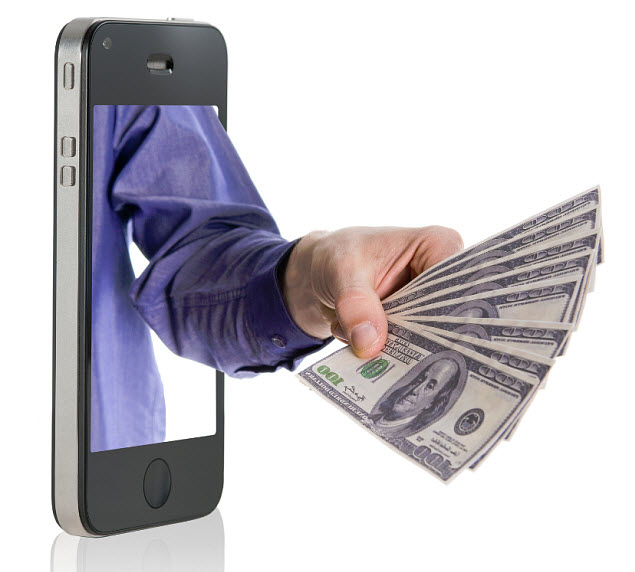eMarketer has now released new data that has show that consumers in the U.S. aren’t keeping up with the globe.
Some of the latest data issued by eMarketer has revealed that American consumers purchased an estimated total of $48 billion of products and services over m-commerce channels throughout 2015.
That represents an increase of 32 percent when compared to the same time in 2014.
Throughout 2015, m-commerce shopping made up an estimated 22 percent of all online retail shopping, according to the eMarketer figures for the United States. That represents a rise of 3 percentage points over the same figure from 2014. While that does appear to be a strong figure, it also shows that mobile shopping is being used more broadly in other parts of the world. For example, in South Korea, 46 percent of all online retail sales were conducted over smartphones or tablets. That represented 5.1 percent of the whole retail sales total for 2015.
Similar m-commerce figures were seen in other parts of the world, showing that the U.S. is lagging behind.
 In China, for example, 50 percent of all online shopping sales and nearly 8 percent of retail purchases occurred over smartphones and tablets throughout 2015, according to the estimates from eMarketer.
In China, for example, 50 percent of all online shopping sales and nearly 8 percent of retail purchases occurred over smartphones and tablets throughout 2015, according to the estimates from eMarketer.
Comparatively, in the U.S., consumers continue to use their mobile devices primarily for informing themselves about products as opposed to actually making a purchase. In the United States, under 2 percent of total retail sales are conducted by smartphone or tablet. Moreover, even though there have been some major mobile payments players that have entered that market – such as Apple and Google – only 14 percent of Americans said they would be interested in purchasing something over their mobile devices during the holiday season, said statistics from Bankrate.
Even specifically among Millennials, the demographic most likely to use their smartphones for activities such as shopping, only 20 percent said they had intended to use m-commerce for holiday purchases either online or through wallet apps that would be used in a retail brick and mortar location. It remains clear that the United States is a market facing considerable barriers to mobile shopping.
Google has been taking a new approach to the mobile payments space
Google’s Android Pay may be much more than a mobile payments platform. Since the company announced Android Pay in June of this year, the platform has evolved rapidly, becoming much more than the payments service that Google may have originally intended it to be. In a recent interview, Pali Bhat, Director of Product Management for Android Pay, suggested that the mobile payments space is beginning to change, and Google may be the company to bring more innovation to the sector.
Android Pay is being designed to offer a seamless and secure experience for consumers
Android Pay may be more than a simple payments application, as it can be used to power a wide range of commerce and could be used to connect users with new commerce opportunities via other mobile applications. Google has been working to make the mobile payments space more secure overall, as well as ensuring that user experience is seamless with other apps and faster.
Android Pay may be quite different than other mobile payments platforms coming from competitors
 Google’s Bhat suggests that the company is taking a “fundamentally different approach” to the mobile payments space. Android Pay is, therefore, meant to exist as a part of the overall app experience that can be used alongside various platforms that existing in the overarching mobile payments ecosystem. One of the notably aspects of the platform is that the Android Pay app can be incorporated into other platforms that already exist, expanding its reach to consumers interested in mobile commerce.
Google’s Bhat suggests that the company is taking a “fundamentally different approach” to the mobile payments space. Android Pay is, therefore, meant to exist as a part of the overall app experience that can be used alongside various platforms that existing in the overarching mobile payments ecosystem. One of the notably aspects of the platform is that the Android Pay app can be incorporated into other platforms that already exist, expanding its reach to consumers interested in mobile commerce.
Google has managed to reach milestones that its competitors have failed to reach
Google may have a bright future in the mobile payments arena, which has become quite competitive. The company recently announced that it will be entering the Australian market in early 2016, an accomplishment that has eluded its competitor Apple. The company also recently allowed Android Pay to be used for in-app purchases in the United States. Google expects to see Android Pay explode in popularity in 2016, especially as more consumers get involved in the mobile commerce space and look for inclusive solutions that can provide a seamless experience across multiple platforms.
 In China, for example, 50 percent of all online shopping sales and nearly 8 percent of retail purchases occurred over smartphones and tablets throughout 2015, according to the estimates from eMarketer.
In China, for example, 50 percent of all online shopping sales and nearly 8 percent of retail purchases occurred over smartphones and tablets throughout 2015, according to the estimates from eMarketer.
 Google’s Bhat suggests that the company is taking a “fundamentally different approach” to the mobile payments space. Android Pay is, therefore, meant to exist as a part of the overall app experience that can be used alongside various platforms that existing in the overarching mobile payments ecosystem. One of the notably aspects of the platform is that the Android Pay app can be incorporated into other platforms that already exist, expanding its reach to consumers interested in mobile commerce.
Google’s Bhat suggests that the company is taking a “fundamentally different approach” to the mobile payments space. Android Pay is, therefore, meant to exist as a part of the overall app experience that can be used alongside various platforms that existing in the overarching mobile payments ecosystem. One of the notably aspects of the platform is that the Android Pay app can be incorporated into other platforms that already exist, expanding its reach to consumers interested in mobile commerce.